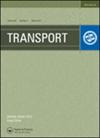两相柴油先导喷射对柴油机压缩天然气空气-燃料混合气燃烧过程的影响
IF 1.3
4区 工程技术
Q3 TRANSPORTATION SCIENCE & TECHNOLOGY
引用次数: 0
摘要
如今,为了减少环境污染,使用替代燃料是一种全球趋势。例如,压缩天然气(CNG)在世界范围内得到了更广泛的应用。在发动机中使用不同的燃料会影响燃烧过程和效率,后者可能会通过诸如在传统柴油发动机中使用气体燃料等方法而降低。因此,了解CNG如何在柴油发动机中燃烧以及如何改进燃烧过程也很重要。因此,本研究的目的是概述使用双燃料模式(一种燃料为DF,另一种燃料为CNG)的自然吸气柴油机的燃烧过程中,分离柴油燃料(DF)先导喷射的影响。本文的重点是柴油喷射系统正常工作的常用发动机,CNG燃料作为附加燃料注入进气歧管。发动机喷油量和喷油时间由加速踏板调节。本文概述了柴油和双燃料燃烧过程,并对DF和双燃料燃烧过程进行了比较。为此,进行了一项测试,以测量各种相关参数,如燃烧压力,扭矩和油耗。结果表明:燃气燃烧时点火延迟时间变化不明显,而燃气燃烧时最大燃烧压力反而更高。双燃料模式下的燃烧速度更快,结果表明,在常规发动机上使用双燃料模式时,有必要调节前喷射和主喷射时间。本文章由计算机程序翻译,如有差异,请以英文原文为准。
THE IMPACT OF A TWO-PHASE DIESEL FUEL PILOT INJECTION ON THE COMPRESSED NATURAL GAS AIR–FUEL MIXTURE COMBUSTION PROCESS IN A DIESEL ENGINE
Nowadays, there is a global trend towards the use of alternative fuels in order to reduce environmental pollution. For example, Compressed Natural Gas (CNG) has become more widely used around the world. The use of different fuels in engines affects the combustion process and efficiency, with the latter potentially being reduced by such means as, for example, the use of gaseous fuels in conventional diesel engines. Therefore, it is also important to know how CNG combusts in a diesel engine and how the combustion process can be improved. Consequently, the aim of the study is to give an overview of the effect of divided Diesel Fuel (DF) pilot injection on the combustion process of a naturally aspirated diesel engine using dual-fuel mode, with one fuel being DF and the other CNG. The focus of the article is on the commonly used engines on which the diesel injection system works regularly, and CNG fuel is injected into the intake manifold as an additional fuel. The engine DF quantity and injection timing are regulated by the acceleration pedal. The article provides an overview of the diesel and dual-fuel combustion process, and compare the DF and dual-fuel combustion processes. For this purpose, a test was carried out in order to measure the various involved parameters, such as the combustion pressure, torque, and fuel consumption. The results demonstrated that ignition delay does not significantly vary with the use of gas as a fuel source, and the maximum combustion pressure is actually higher with gas. The combustion is more rapid in dual-fuel mode and results indicate that when using dual-fuel mode on regular engines, it would be necessary to regulate the pre- and main-injection timing.
求助全文
通过发布文献求助,成功后即可免费获取论文全文。
去求助
来源期刊

Transport
Engineering-Mechanical Engineering
CiteScore
3.40
自引率
5.90%
发文量
19
审稿时长
4 months
期刊介绍:
At present, transport is one of the key branches playing a crucial role in the development of economy. Reliable and properly organized transport services are required for a professional performance of industry, construction and agriculture. The public mood and efficiency of work also largely depend on the valuable functions of a carefully chosen transport system. A steady increase in transportation is accompanied by growing demands for a higher quality of transport services and optimum efficiency of transport performance. Currently, joint efforts taken by the transport experts and governing institutions of the country are required to develop and enhance the performance of the national transport system conducting theoretical and empirical research.
TRANSPORT is an international peer-reviewed journal covering main aspects of transport and providing a source of information for the engineer and the applied scientist.
The journal TRANSPORT publishes articles in the fields of:
transport policy;
fundamentals of the transport system;
technology for carrying passengers and freight using road, railway, inland waterways, sea and air transport;
technology for multimodal transportation and logistics;
loading technology;
roads, railways;
airports, ports, transport terminals;
traffic safety and environment protection;
design, manufacture and exploitation of motor vehicles;
pipeline transport;
transport energetics;
fuels, lubricants and maintenance materials;
teamwork of customs and transport;
transport information technologies;
transport economics and management;
transport standards;
transport educology and history, etc.
 求助内容:
求助内容: 应助结果提醒方式:
应助结果提醒方式:


